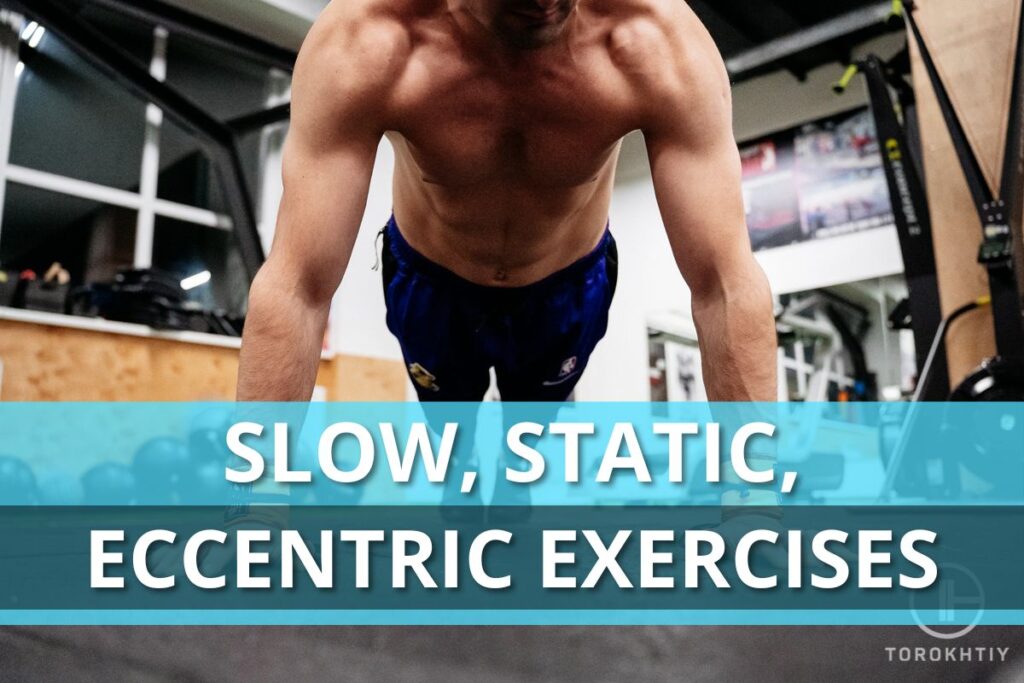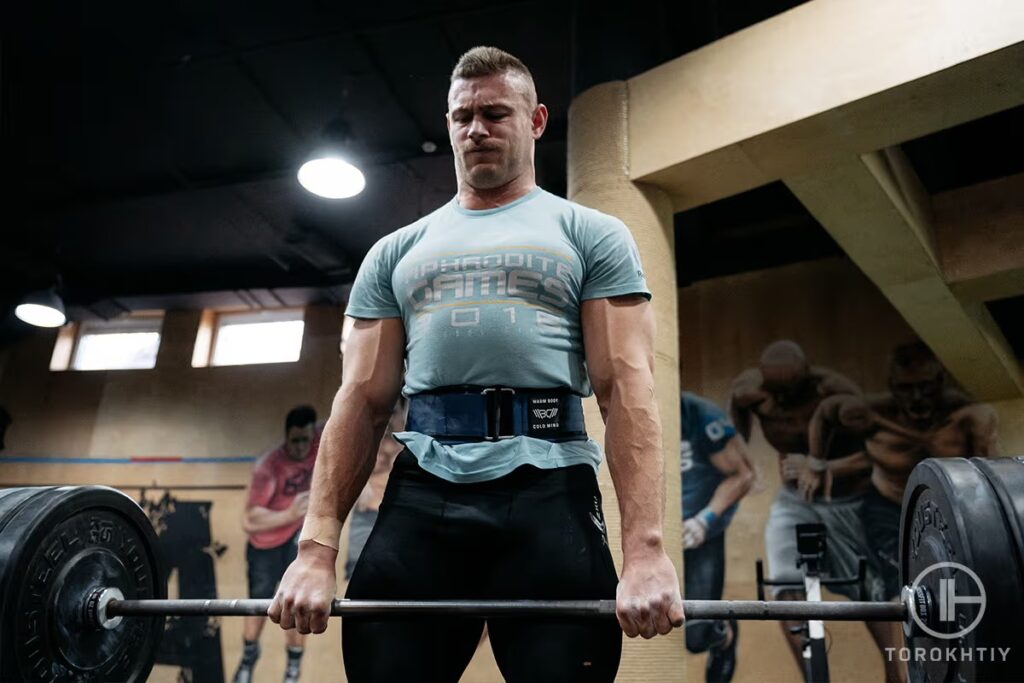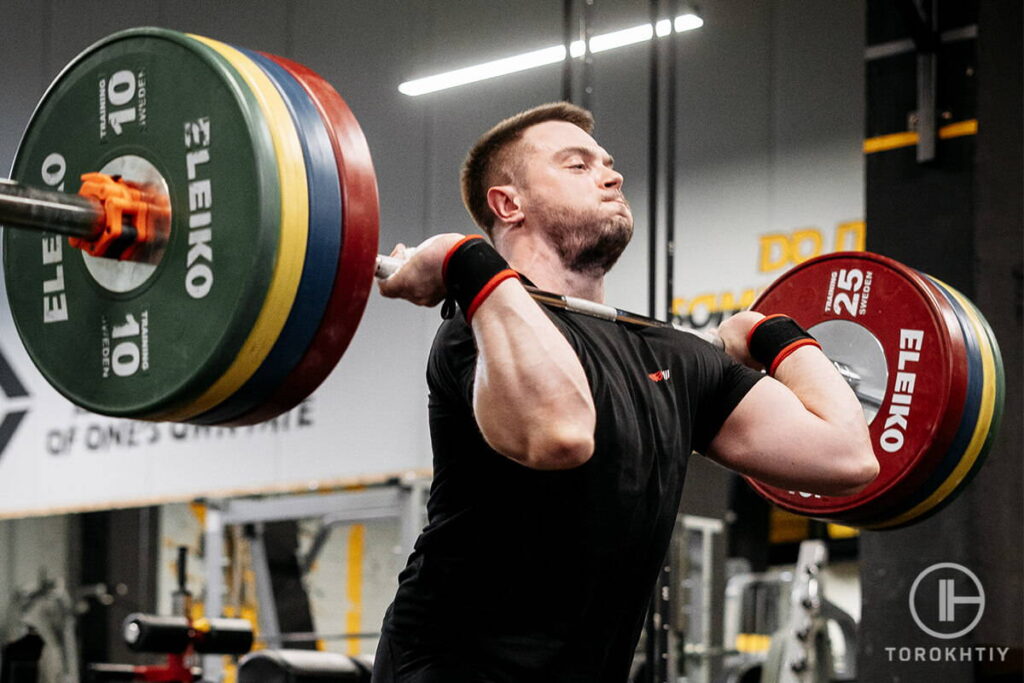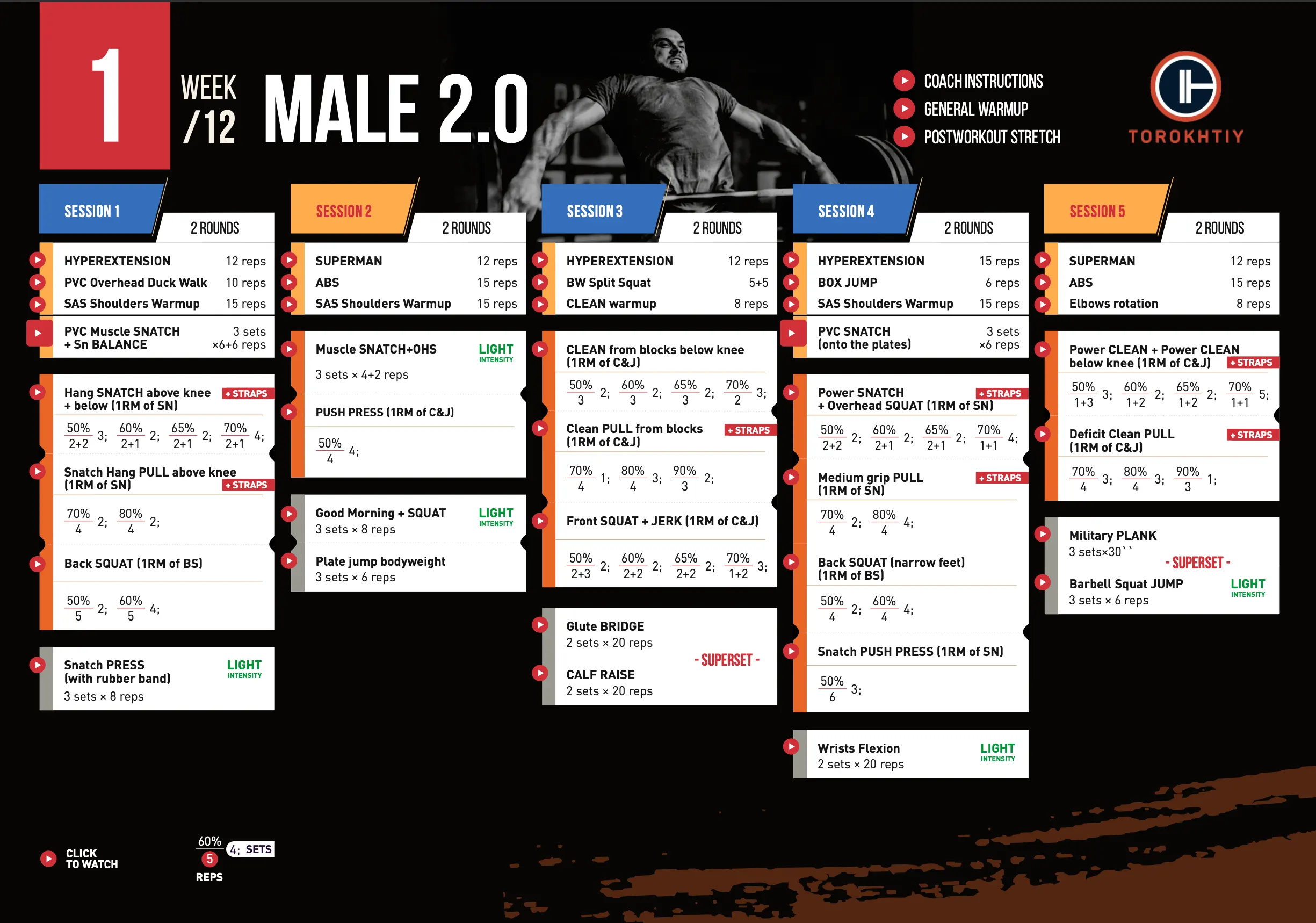Slow, Static, Eccentric Exercises
Author:
Unlock your full potential by engaging with our experts and community! Have questions about your fitness journey or looking for expert advice on weightlifting techniques? Don’t hesitate — leave a comment below and Sergii Putsov will provide a personalized answer and insights to help you reach your goals.
Torokhtiy is reader-supported. Some links are affiliate links, and we may earn a commission at no extra cost to you. See our disclosure page for details.

Exercises performed at slow speed, exercises of an eccentric, static and mixed style occupy a large place in the training of weightlifters. To understand them, I offer to consider what practice of using these exercises is in the Ukrainian weightlifting school. There are data from the training programs of the national team of Ukraine during 2008-2012.
Non-standard methods of performance are not used in the olympic snatch and clean & jerk – the competitive exercises have their clear format of performance.
In other snatch exercises and auxiliary exercises, most athletes use non-standard exercise in their training programs. The working intensity ranges from 40 to 75% in the preparatory and competitive periods. Weights of more than 75% in snatch and clean exercises are extremely rarely used for this type training, as this is quite traumatic. In snatch exercises and clean, a pause is often performed in various positions (lift off, above/below the knees) – this technique helps to work out this phase and strengthen the angles. The static method of muscle work is a strong stress for the nervous system, which promotes the improvement of technique.
Follow us!

Free!
Get a 2-week Weightlifting Program as a bonus for the subscription to kickstart your training plan!

Free!
You may like it:
- Detailed Olympic Weightlifting Program For Beginners
- 12-Week Weightlifting Program For Women (Detailed Example)
- Create Your Olympic Weightlifting Program (Examples Included)
Another useful snatch exercise – snatch overhead squat with a pause of 3-6 s in half-squat – strengthens upper body and improves the sense of balance. In the jerk, a static method is used when working out a dip: a pause at the lower point of the dip helps to “find” its ideal position for a drive. Static is also quite appropriate for working out a stable overhead position in a split jerk. Young athletes often have a bad habit of “jumping out” of split position in jerk during warm-up: later it can end badly on large weights.
More than half of Ukrainian athletes use non-standard methods in pulls both in the preparatory and competitive periods. Mostly they work with intensity 75-105% The variety of non-standard methods in pulls is much greater. Pulls with several pauses (lift off, above/below the knees) – in the preparatory period, it was a murderous exercise in our team. Believe me, after a snatch pull with three pauses of 4 seconds, 3 sets of 3 reps – you were ready to confess to all crimes on Earth, but it was not necessary to do this, the coach simply forced you to go on the 4th set.

But there was an even worse option: first 3 pauses up, and just slowly lower down. The use of the eccentric method in pulls is an excellent solution in the preparatory method: increased TUT, as well as with slow lowering of the bar, it works out the correct position of the torso very well. The technique is improving, the strength is growing – super recipe!
These techniques are not used so widely in the back and front squats (up to 25% of athletes use them in the preparatory period and up to 12% in the competitive one) and there are several reasons for this:
- weightlifters in squats try to maintain dynamics and high-speed power working style;
- it is quite traumatic as practice shows.
However, back squats with a pause in the preparatory period can be found in the athletes’ programs. Chinese and Russian schools practice front squats with a pause. But there are some nuances:
- front squats are in principle, a difficult exercise since the center of gravity of the athlete is already moved forward;
- the downward movement must be performed under control, and at the lower point the athlete must be as assembled and focused as possible;

- technique and angles should be ideal so that all positions are preserved even after a pause;
- this exercise is only for advanced and TOP level athletes;
- athletes-beginners need to practice this exercise without a pause with a lightning-fast switch at the lower point, to form the correct skill of recovering in clean.
Working zones of intensity are from 70 to 105%.
I also want to draw attention to several requirements and recommendations:
- Athletes of older age (after 28 y.o) and with more experience (more than 8 years) need to minimize the number of non-standard exercises in the competitive period, as this negatively affects recovery and preparation for competition.
- TOP-athletes minimally use non-standard exercises. This often misleads young athletes who are trying to copy their training programs.
- Athletes of light weight categories (men up to 67 kg, women up to 55 kg) minimally use slow, eccentric, and static exercises in their training, as this can affect speed qualities. A feature of their programs is a large number of exercises for working out and improving the speed of drop under the bar.
TRAIN TOGETHER – TRAIN RIGHT
You might be interested in:
Why Trust Us?
With over 20 years in Olympic weightlifting, strength training, nutrition coaching, and general fitness our team does its best to provide the audience with ultimate support and meet the needs and requirements of advanced athletes and professional lifters, as well as people who strive to open new opportunities and develop their physical capabilities with us.
By trusting the recommendations of our certified experts in coaching, nutrition, and sports training programming, as well as scientific consultants, and physiotherapists, we provide you with thorough, well-considered, and scientifically proven content. All the information given in the articles concerning workout programming, separate exercises, and athletic performance, in general, is based on verified data.
The product testing process is described in more detail here.
Author: Sergii Putsov
Head of Sport Science, PhD
Best Results: Snatch – 165 kg,
C&J – 200 kg
Sergii Putsov, Ph.D., is a former professional weightlifter and National team member, achieving multiple medals in the 94 kg weight category at national competitions. With a Master’s degree in “Olympic & Professional Sport Training” and a Sport Science Ph.D. from the International Olympic Academy, Greece, Sergii now leads as the Head of Sport Science. He specializes in designing training programs, writing insightful blog articles, providing live commentary at international weightlifting events, and conducting educational seminars worldwide alongside Olympic weightlifting expert Oleksiy Torokhtiy.




Still have questions after reading our article? Unlock your full potential by engaging with our experts and community! Don’t hesitate — leave a comment below and Sergii Putsov will provide a personalized answer and insights to help you reach your goals.